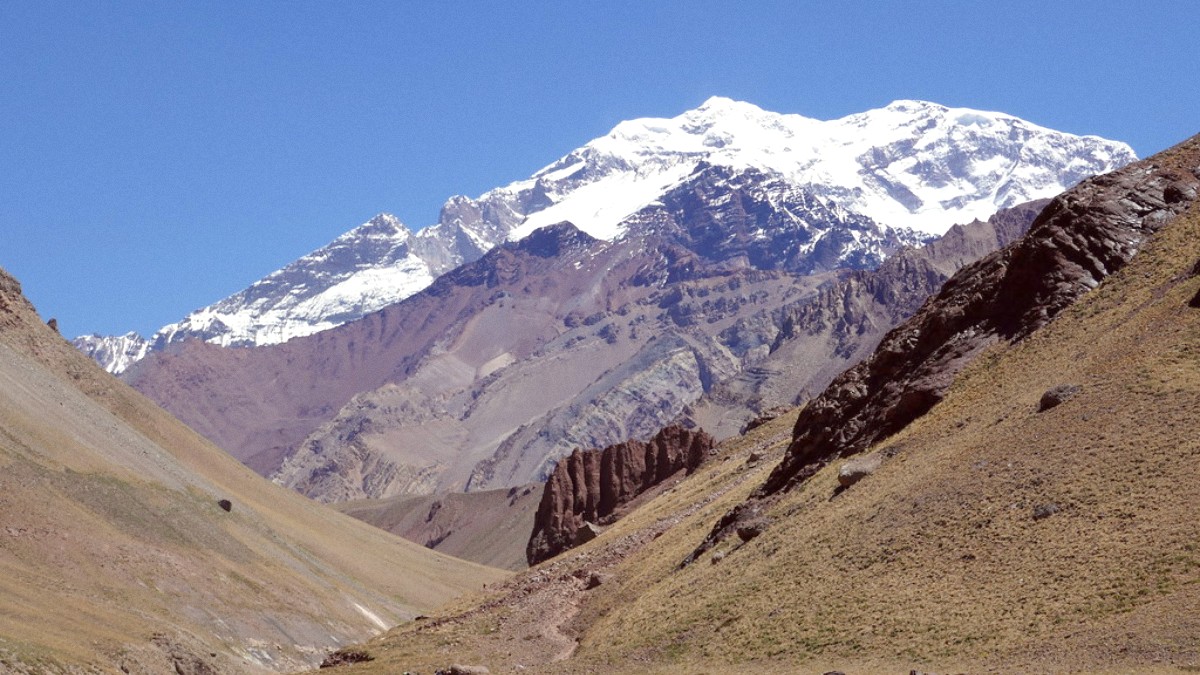
Central Argentina, Argentina
This region, a desert oasis brought to life by ingenious irrigation, offers an unforgettable journey into the heart of Argentina's wine country and the majesty of the Andes. Mendoza invites you to slow down, to taste, to explore, and to connect with a landscape and culture defined by passion and tradition. Prepare to discover a destination that captivates your senses and leaves a lasting impression.
Mendoza beckons with its blend of viticultural excellence, dramatic natural beauty, and a laid-back urban atmosphere. Travelers enjoy world-class wines, thrilling outdoor pursuits, and local cuisine.
The region's unique climate and historical ingenuity in irrigation create a verdant landscape against the backdrop of towering peaks, making it a truly distinctive destination in Argentina.
Mendoza province is in west-central Argentina, sharing a border with Chile to the west. Its unique geographical position, in the rain shadow of the Andes mountain range, shapes its climate and landscape. The city of Mendoza, the provincial capital, sits at an elevation of about 760 meters (2,500 feet) above sea level, presenting distinct views of the towering peaks. The region’s climate is semi-arid and continental. Rainfall is scarce, and the environment would naturally be a desert.
An intricate system of acequias, or irrigation channels, brings snowmelt from the Andes directly to the city and the surrounding agricultural lands. These channels, visible along nearly every street, give Mendoza its distinct green character, providing water to its tree-lined avenues, parks, and vineyards. To the west, the Andes rise dramatically, forming a natural boundary with Chile. This segment includes Mount Aconcagua, the highest peak in the Americas, standing at 6,960.8 meters (22,837 feet). The mountains are a source of life-giving water, influence weather patterns, and offer a playground for outdoor activities.
Mendoza city sits at 760 meters (2,500 feet).
Semi-arid, continental with low rainfall.
Andes snowmelt via historic acequias.
Western border formed by the Andes, including Aconcagua.
Luján de Cuyo, Maipú, and the Uco Valley, each with unique microclimates.
The delicate balance of high mountains, arid plains, and human-made irrigation defines Mendoza's geography. It directly impacts its winemaking success, its urban planning, and the outdoor adventures available to visitors.
The Mendoza River, fed by Andean snowmelt, flows through the province, supporting agriculture and offering opportunities for water sports like rafting.
High altitude regions like the Uco Valley, with intense sun exposure and a wide diurnal temperature range (hot days, cool nights), are especially suitable for cultivating high-quality grapes, notably Malbec.
Mendoza's setting shapes its character, creating a oasis at the foot of the magnificent Andes.
Before European arrival, the Huarpe people inhabited the region, developing sophisticated irrigation techniques to cultivate the land in the arid climate. Their acequia system formed the foundation for the one still in use today, a lasting testament to their ingenuity. The Spanish founded Mendoza on March 2, 1561, naming it “Ciudad de Mendoza del Nuevo Valle de La Rioja” in honor of the Governor of Chile, Don García Hurtado de Mendoza. Its location made it an useful stop on the trade route between Buenos Aires and Santiago, Chile. The city grew as an agricultural hub, producing wine and olive oil for the colonial market. Its initial architecture reflected typical Spanish colonial styles, with adobe buildings and narrow streets.
A catastrophic earthquake struck Mendoza on March 20, 1861, destroying much of the colonial city and causing thousands of casualties. This event prompted the city to rebuild with a focus on earthquake-resistant design. The reconstruction efforts created the wide avenues, numerous plazas, and low-rise buildings that characterize modern Mendoza. The city center’s design, with its five main plazas, was a conscious effort to create open, safe spaces for future seismic activity. General José de San Martín, Argentina's national hero, established his base of operations in Mendoza in the early 19th century. From here, he meticulously prepared and launched his audacious campaign to cross the Andes and liberate Chile and Peru from Spanish rule. His Army of the Andes trained in the plains near Mendoza before embarking on one of history's greatest military feats. Statues and monuments, notably at Cerro de la Gloria in Parque General San Martín, honor his legacy and the bravery of his soldiers.
The late 19th and early 20th centuries saw a wave of European immigrants, notably from Italy and Spain, who brought advanced viticulture techniques. This influx, combined with the existing irrigation system and ideal climate, transformed Mendoza into Argentina's undisputed wine capital. The establishment of large-scale bodegas and the introduction of new grape varietals, like Malbec, cemented the region's global reputation.
Mendoza's role in Argentine independence is another cornerstone of its history. General José de San Martín's base of operations here prepared and launched his audacious campaign to cross the Andes and liberate Chile and Peru from Spanish rule, a formidable military feat.
Today, Mendoza continues to honor its past while looking to the future. Its historical sites, from the ruins of the original city to San Martín's monuments, tell a story of overcoming adversity and achieving greatness. The thriving wine industry, built on centuries of agricultural innovation and European influence, is a direct link to this rich historical narrative. Visitors experience this history through its architecture, its cuisine, and its world-class wines.
Mendoza offers travelers a diverse range of experiences, appealing to wine enthusiasts, outdoor adventurers, and those seeking cultural immersion.
Mendoza is synonymous with wine, producing over 70% of Argentina's wine, with Malbec as its signature varietal.
The majestic Andes Mountains offer a dramatic backdrop and a natural playground for outdoor activities.
Mendoza city is a pleasant urban center with wide, tree-lined streets and numerous green plazas for shade and tranquility.
Beyond wine, Mendoza’s culinary scene celebrates Argentine flavors. The region is known for its succulent asado (barbecue), flavorful empanadas mendocinas, and high-quality olive oil. Dulce de leche and alfajores satisfy sweet cravings. Many wineries offer gourmet dining experiences, pairing local ingredients with their wines.